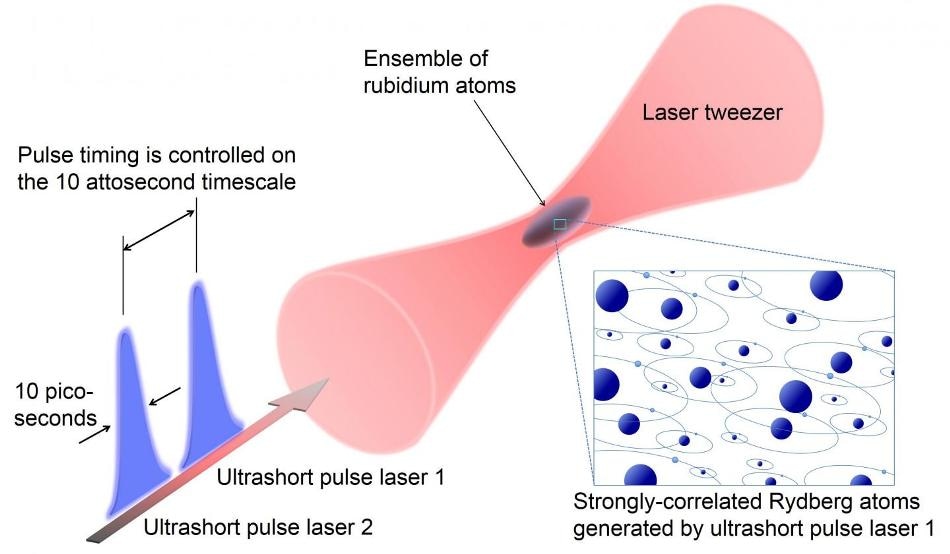Nov 17 2016
 Schematic explanation of the world’s fastest quantum simulator (Credit: NINS/IMS).
Schematic explanation of the world’s fastest quantum simulator (Credit: NINS/IMS).
Kenji Ohmori from the Institute for Molecular Science, National Institutes of Natural Sciences, Japan, has teamed up with Matthias Weidemüller from the University of Heidelberg, Guido Pupillo from the University of Strasbourg, Claudiu Genes from the University of Innsbruck and their collaborators to create the world’s fastest simulator that has the ability to simulate quantum mechanical dynamics of a wide variety of particles that interact with one another in less than one billionth of a second.
When a large number of electrons interact with one another, the resultant dynamics controls a number of significant chemical and physical phenomena such as magnetism, superconductivity, and chemical reactions. Such an ensemble, where a number of particles interact with one another is called a “strongly correlated system.”
Consequently, perceiving the properties of strongly correlated systems is one of the main aims of modern sciences. However, it is highly challenging to theoretically estimate the properties of a strongly correlated system even while using post-K supercomputer - one of the world’s fastest supercomputers anticipated to be created by 2020 through a national project of Japan.
For instance, the post-K cannot even accurately compute the energy - the most basic characteristic of matter - when the system includes more than 30 particles. Rather than using a classical computer such as the post-K for computing, a substitute known as a “quantum simulator” has been suggested.
In a quantum simulator, atoms (which are quantum mechanical particles) are gathered in an artificial strongly correlated system which is controllable and has known properties. The simulator is then used to simulate and perceive the properties of a disparate strongly correlated system with unknown characteristics.
Consequently, huge investment has been recently started for developing quantum simulators in national projects of different countries including China, EU, and the US.
The research group has developed a totally new quantum simulator that has the ability to simulate the dynamics of a strongly correlated system consisting of 40 atoms in less than one billionths of a second. This was achieved by introducing an innovative technique in which an ultrashort laser pulse having a pulse-width of only 100 billionths of a second is utilized to control a high-density atomic ensemble that is cooled to temperatures close to absolute zero.
In addition, the team has successfully simulated the motion of electrons inside the strongly correlated system, which is modulated by altering the interactional strength between various atoms in the ensemble.
Such an “ultrafast quantum simulator” is anticipated to serve as a fundamental tool for studying the origin of physical characteristics of matter, such as magnetism and, probably, superconductivity.
The study results will be published on 16 November 2016, in Nature Communications, an online scientific journal of the UK.